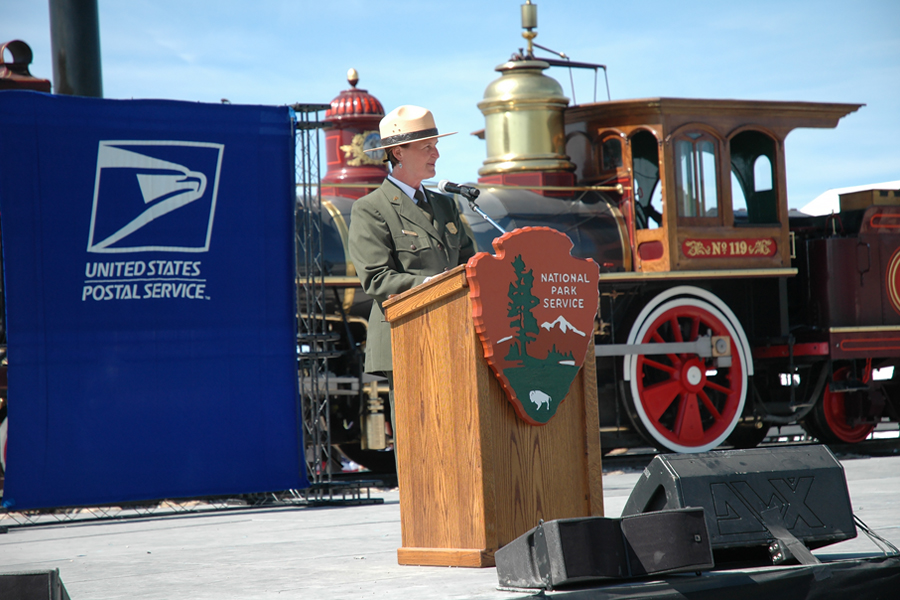Here are five facts about the Golden Spike National Historic Park, where USPS recently dedicated its Transcontinental Railroad stamps.
1. The Golden Spike National Historic Park is, well, historic. The park, located at Promontory Summit, UT, marks the spot where the Transcontinental Railroad was completed during the famous “golden spike ceremony” on May 10, 1869. The location is sometimes referred to as the “Last Spike Site.”
2. Congress helped decide the site’s location. The Central Pacific Railroad Co. built the western portion of the Transcontinental Railroad starting from Sacramento, CA, while the Union Pacific Railroad Co. built the eastern section beginning from Omaha, NE. When the tracks were nearly completed, Congress pressured the two companies to reach an agreement on a meeting place, and after considerable negotiation, they finally decided to meet midway between each company’s track-laying crews.
3. Promontory Summit has a colorful history. From May-December 1869, Transcontinental Railroad passengers and freight were transferred at Promontory, which was known to be a wild town with gambling, looting and “sporting women.” After the railroad’s terminus moved to Ogden in 1870, Promontory became primarily a helper station, housing mostly railroad workers and their families.
4. It took 88 years for the site to gain its rightful place in history. For a long time, the U.S. government showed no interest in preserving the site. This changed in 1957, when then-Interior Secretary Fred Seaton designated seven acres at the summit as a national historic site. In July 1965, the Golden Spike National Historical Park was established under the National Park Service. In 1979, the park added two fully functional replicas of the Jupiter and No. 119 locomotives — the trains that were used during the golden spike ceremony.
5. The golden spike isn’t at the “Last Spike Site.” The spike used during the 1869 ceremony is located in Palo Alto, CA, where it’s part of a collection at Stanford University’s art museum. Leland Stanford, president of the Central Pacific Railroad Co., later founded Stanford University.
Got ideas for future editions of “The List”? Email them to uspslink@usps.gov.
